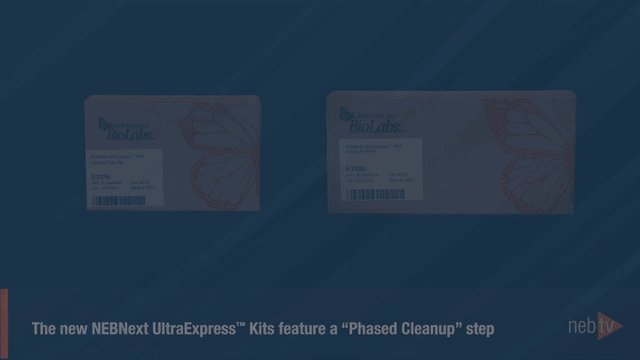Phased Cleanups for NEBNext UltraExpress™ Kits

Script
After the first bead binding step, supernatant is removed as in other workflows. But, instead of adding ethanol to wash the beads, instead elute the nucleic acid from the beads by adding 0.1X TE and then mixing. Without removing the supernatant, add NEBNext® Bead Reconstitution Buffer and mix. When 0.1X TE is added the whole sample is eluted off the beads.
The NEBNext Bead Reconstitution Buffer re-binds the sample to the same beads again. During this binding step more of the unwanted smaller fragments stay in the supernatant to be removed. Separate the beads and remove the supernatant. And from here on the samples are washed with ethanol and eluted like in many other bead cleanup protocols. When removing the second ethanol wash, remove most of the ethanol with a p200 tip. Then allow the remaining liquid to run down into the bottom.
With a p200, go back with a p10 tip, remove any remaining droplets. Please proceed quickly with this step, because the beads are at risk of becoming too dry, which can reduce library yield. The time it takes for the beads to dry depends on the temperature, humidity, and altitude, so it can take different amounts of time for the beads to be ready. If the beads over dry the library yield will be reduced. Make sure the beads are eluted before they turn light brown and crack and soak them with the elution buffer when its time.
Make sure the beads are fully resuspended during the mixing and before starting the incubation timer. Then incubate, separate, and transfer the eluate to a new tube.

